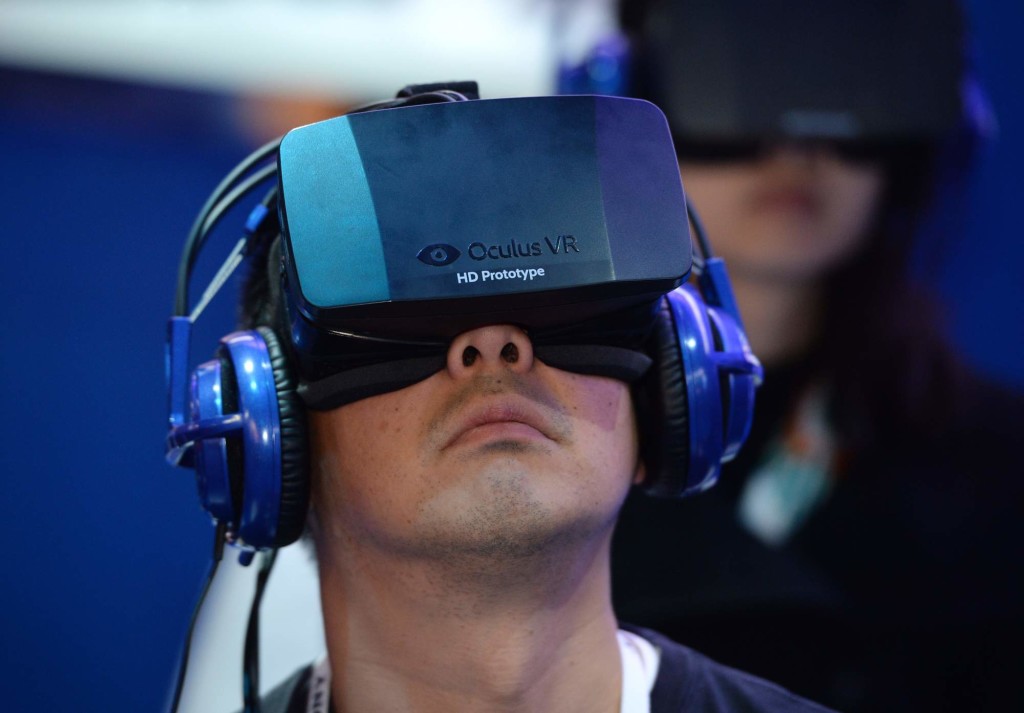
Let's Review Some Apps
Technology moves in eras, and each era has it’s own breakout fields. This current era – the one that is soon to end – is the era of the PC and, by extension, the smartphone. Every device and every major or minor innovation in the industry since the late 70s and early 80s has revolved around improving the PC in some way: Whether it’s a new type of laptop or lowering the price of memory, every advancement has, in some way, lead back to the PC.
So how does an era end and a new one begin?
For an era to end, there needs to be A) No more room for major innovation in the main devices of the current era and B) New devices that are so radically changed from the last era’s devices that they are ready to take over or even replace the older devices.
To be clear, new eras can co-exist and so prolong, at least on one side, the older era to fade out more slowly. One example is that, while there is a distinct lineage or “passing of the torch” from the PC to the smartphone, the lineage between PC and the burgeoning VR paradigm is a bit more complex. While VR may be based on the PC and use the PC to its advantage, the PC — even there — is relegated to more a part of the puzzle than the foundation of the entire new shift. And remember, VR steps, perhaps more overtly, into the realm of the wearable than anything. What we’re talking about is an entirely new category of devices, not just a new category of device.
Up until very recently, every day there seemed to be a new Android phone that was twice as fast as the last. The same seemed true for PCs and laptops: every day there was more and more offered for less and less money. And while that constant upgrade cycle is sure to continue, the practical importance of such upgrades has begun to slow dramatically. There is only so much we really need inside of our PCs and smartphones. At a certain point, our eyes can’t tell the difference between a 5-inch 4K display and a 5-inch 8K display, the difference between a 27-megapixel camera and 42-megapixel camera, the difference between a quad-core processor and an octa-core processor. There’s only so much these technical advancements can really do to enhance the established experience.
So now, the new era is beginning to arise. The next question to ask is “What devices and events will kick it off over the next decade or so? There are a few obvious answers: As cited above, VR (and Augmented Reality, or AR) is one. The merger of the automotive and tech industries with the advent and distribution of autonomous vehicles is another. The connected “Internet Of Things” (which is a terrible term and needs to be changed) is a third. But we at WatchAware believe another clear answer to this question is wearable technology — it’s something we all truly believe in and are invested in, and we’re looking forward to it’s widespread distribution.
At the moment, there are only a few contenders out there for actual useful wearables: Apple Watch, Android Wear devices, Samsung’s Tizen smartwatches, Pebble, Google Glass 2 (forthcoming), and maybe a few others, like dedicated fitness trackers and so on. But we believe that at the moment, the only one of these products that’s truly on pace to being part of the fundamental future of technology is Apple Watch. Google doesn’t seem to have their act together with Android Wear, Pebble’s software is a cartoony joke (intentionally, I think) that will keep it a niche “nerd” offering, and Google Glass 1 is on hiatus (and its sequel has been touted by Google as being not for the consumer but for the enterprise market).
So why is Apple Watch going to succeed? What does it do? Why should you buy one? Truthfully, these are all questions I don’t have the answer to, but I think the reason no one knows is that the answer isn’t ready yet.
But it’s about to be.
Let’s pretend the App Store on your iPhone or iPad doesn’t exist. Now, why should you use an iPad? Why should you use an iPhone? Why spend so much on a device that just has a fancy screen and makes some phone calls and lets you browse the Internet? This was the reaction from people before the launch of both of those products. With the iPad, people didn’t realize the answer was going to be the App Store, but the thing that makes iPhone and iPad so unique is exactly that, and without it, neither device would be nearly as desirable.
Last week’s ridiculous piece by Brian X. Chen for the New York Times shows that people are once again forgetting how important apps are, and that if they didn’t exist, you wouldn’t really use your iPhone and iPad. The point is not that Apple Watch needs to have all of the standard apps you’re used to on your bigger devices (Facebook, Twitter, Google, etc.), the point is that there need to be apps that are made specifically and natively for the Watch. Much the same way we have apps that made our devices – apps like Paper and Flipboard, on iPad, and apps like Instagram on iPhone – what they are today, we need apps that will make the Apple Watch achieve its truest, most useful potentials.
With the launch of watchOS 2 and native Watch apps quickly approaching, we decided it’s time to go searching and discover those apps that will make the Apple Watch the Apple Watch. So toady, we’re doubling down on writing Apple Watch app reviews. You’ll still get industry reports, but those matter less and less. From here on out, Apple Watch is going to be primarily about its app experience.
Here’s how we’re going to approach this:
Every app will be tested in the real world based on its described use case
Watch apps are different than iPhone apps, as the Watch is made for use in the real world, to help you conveniently and quickly while you are out and about. As such, all reviewed apps will be considered based on their described use case. For example, a weather app like Dark Sky would be reviewed for a week, where we’ll use it to see when stormy weather is incoming and gauge its accuracy in forecasting for our specific location(s). Thus, a review wouldn’t go up until we take full advantage of its capabilities. Similarly, an app like BMW Remote would be used in tandem with my car for an entire week before I put up the review. One-day reviews won’t cut it for Apple Watch. The device demands a melding into your daily life, and the best apps will make similar demands.
The Scale
All apps will be reviewed on a scale of one to five, both on an overall level and on different categories of features. So once again, a weather app like Dark Sky would be scaled on things like accuracy, design, and concept in addition to overall utility at the wrist. Remember, not all apps or services make practical sense on Apple Watch. We’ll take that strongly into account.
Pros and Cons
The end of each review will have a detailed list of the pros and cons of the app. These will be noted during the review, not simply after it. Our goal is to use this section to summarize the in-depth report above it.
So that’s it in a nutshell — just a quick synopsis of how WatchAware app reviews are going to work. We want to put out the best reviews possible, and as time goes along, we will keep an ongoing list of the best Apple Watch apps. We’re calling this list “Apps that make Apple Watch Apple Watch.” This list, like all our current curations, will be continually updated, the difference being that this one will tie directly into our thorough, personal reviews. If you are an app developer and would like to have your app reviewed, check out our developer portal were you’ll receive free assets for your app, in addition to alerting us of it’s existence so we can take a look.
We’re super excited about the future of wearable technology, and we want to help introduce and promote that future to our readers as best we can.
Let’s see how Apple Watch becomes the future.
[VR image via ROBYN BECK/AFP/Getty Images, iPod via Mashable]

